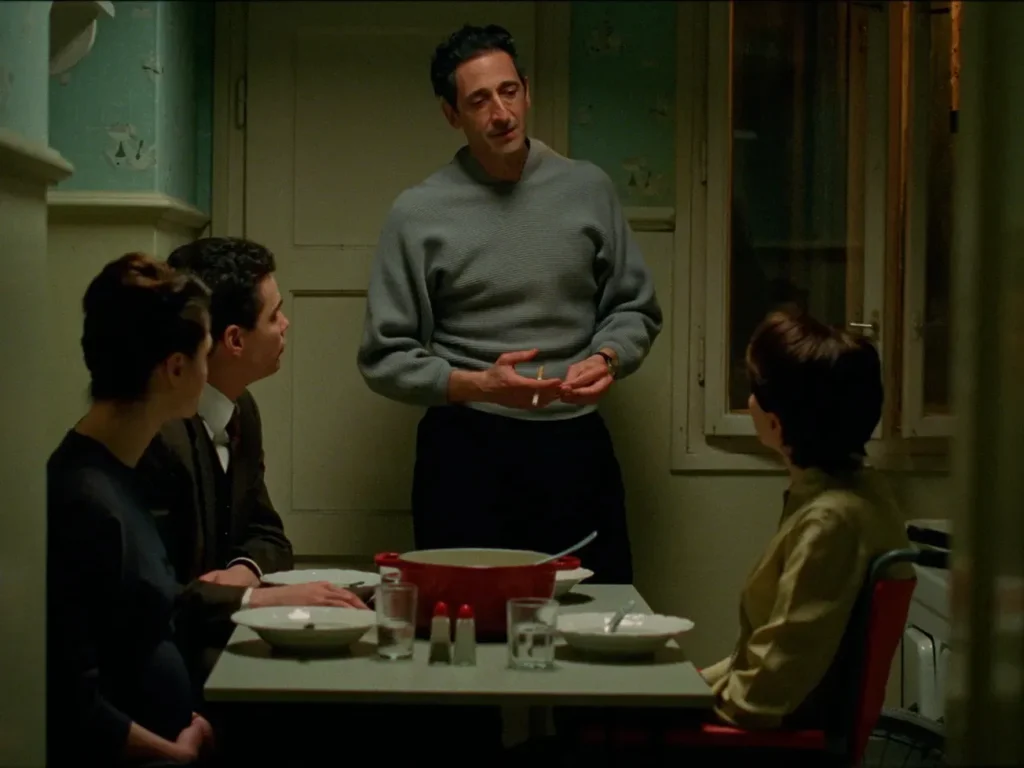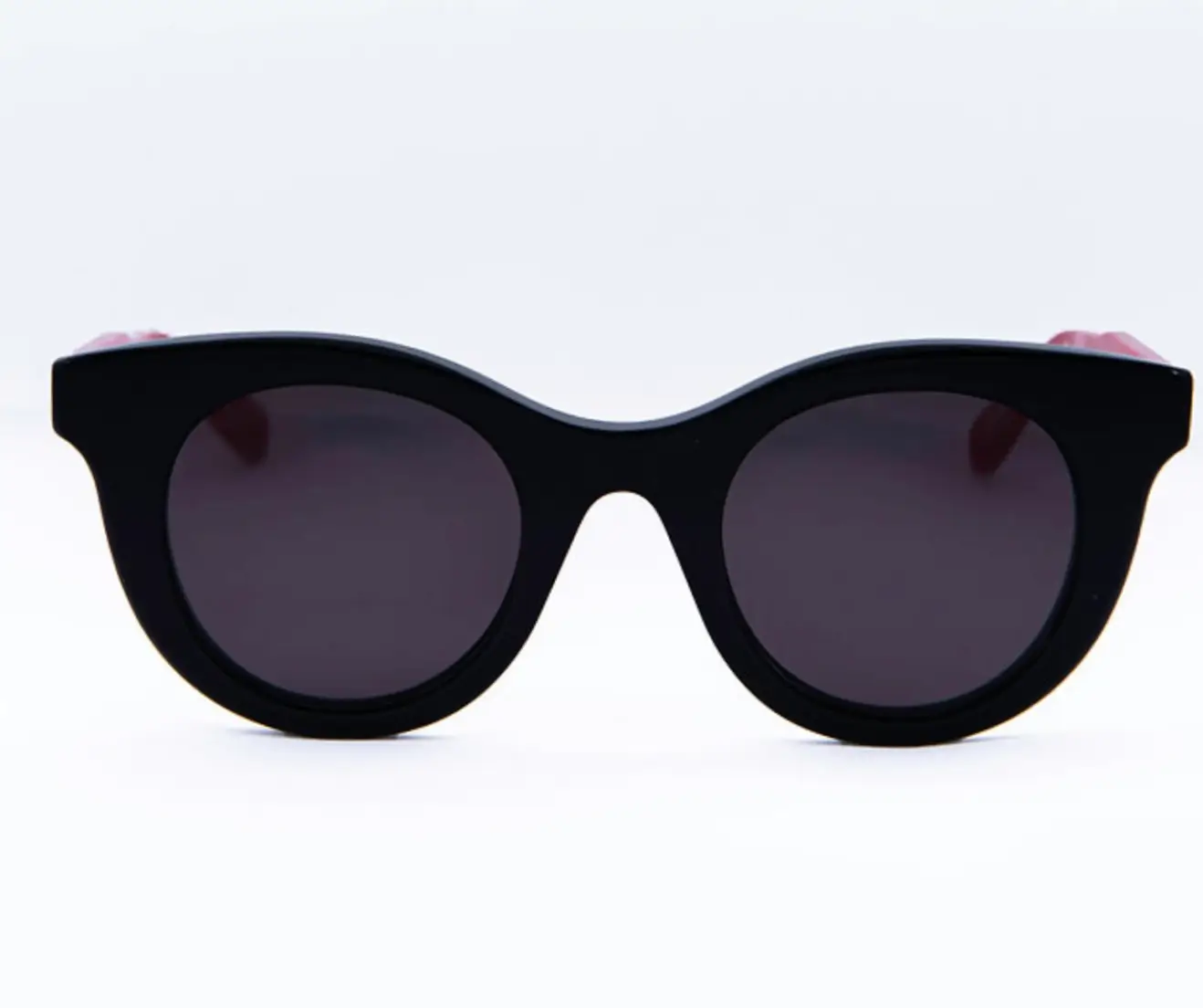Costume design has always functioned as the unsung architecture of film, quietly constructing character, mood and narrative without demanding attention. Once in a while, however, a garment escapes its fictional frame and becomes something larger: a symbol, a touchstone, a piece of cinema that the public can actually touch. That is exactly what happened with a simple grey sweater worn by Adrien Brody in The Brutalist—a period-specific knit that viewers could not get out of their heads. Now, thanks to costume designer Kate Forbes and British knitwear designer Ilana Blumberg, that same sweater exists outside the film. Fans can wear it, feel its weight, and carry a piece of the story on their own shoulders.
flow
Kate Forbes’ decision to recreate the sweater was not about merchandising or capitalizing on hype. She has been explicit in interviews that the response from the public surprised her, and that the original piece was chosen purely for character logic rather than aesthetic impact. László Tóth, the fictional Hungarian architect portrayed by Brody, is a man shaped by displacement, discipline and the stark beau of his craft. His clothing—worn, sturdy, and muted—reflects his world view. The grey sweater, in particular, served as a transitional garment between past and present, carrying hints of Eastern European utilitarianism into an American post-war setting.
Forbes sourced the original piece from a collection of vintage European knitwear, looking for something slightly irregular, handmade, and textured enough to feel lived-in without appearing precious. What she found was a heavy, charcoal-washed grey that sat on Brody like emotional armor. When audiences commented on it, they weren’t simply complimenting a sweater. They were responding to character, to atmosphere, to a deeply human portrait conveyed through cloth.
Yet what’s remarkable is how quiet the garment is. In a world saturated with statement pieces and fashion-forward film wardrobes, the Brutalist Sweater is almost aggressively unremarkable—and that is precisely its allure.
min
There is a cultural hunger for authenticity right now, especially in fashion. The pendulum has swung from the maximalist streetwear wave of the late 2010s and early 2020s toward an aesthetic closer to what the Brutalist movement itself championed: function, honesty, and form stripped of excess.
The sweater embodies this philosophy. Its shape isn’t trendy. Its color isn’t bold. Its texture isn’t decorative. Instead, it feels essential, quiet, and grounded—three qualities many consumers crave after years of chaotic aesthetics.
Minimalism in fashion has always resurfaced cyclically, but what’s happening now is more spiritual than stylistic. The renewed appetite for simple garments stems from fatigue: fatigue with fast fashion, fatigue with hyper-consumption, fatigue with the rapid pace of trends. The Brutalist Sweater is, in a sense, an antidote.
By recreating the piece, Forbes and Blumberg have tapped into a larger movement: slow fashion as an emotional counterpoint to digital life. Fans aren’t just buying a sweater. They’re buying a feeling—weight, warmth, and grounding in a time that often feels without anchor.
style
Reproducing a garment like the Brutalist Sweater is not as simple as copying measurements. Vintage textiles carry histories in their stitches, inconsistencies in their yarn, small imperfections that can’t be faked. Blumberg, known for her meticulous approach to British knitwear, understood this challenge acutely.
What makes the recreation special is its refusal to polish or modernize the silhouette. Instead of streamlining the fit, tightening the hem, or softening the texture, Blumberg preserved the slight irregularities that gave the original its soul. The weight remains deliberate. The yarn retains a dry, almost coarse feel—soft enough to wear, rough enough to evoke the era.
The color, too, is specific. It’s not a flat grey but a layered, smoky tone that looks different depending on light: sometimes cold, sometimes warm, always suggestive of shadows and industrial landscapes. It mirrors the emotional terrain of the film, where architecture becomes both refuge and battlefield.
This is where costume design becomes a parallel art form to filmmaking. Forbes and Blumberg didn’t just make a sweater; they preserved emotional continuity between the film and the real world. In doing so, they remind us that costumes—when crafted with intention—are architectural structures in their own right.
adrien brody
The sweater works, in large part, because Adrien Brody knows how to wear it. Brody has always excelled in roles that rely on restraint, and he possesses a rare ability to express entire histories through posture. In The Brutalist, his performance is sculptural—quiet, contained, and as deliberate as the buildings his character designs.
The sweater’s heavy drape accentuates Brody’s physical storytelling. It narrows his silhouette, elongates his frame, and makes his movements feel weighted by memory. When he sits, the knit folds around him like a second skin. When he walks, it clings with a tension that speaks to internal struggle. When he works, sleeves pushed up, the sweater becomes a symbol of grit and intellectual labor.
Clothing in film often disappears, functioning invisibly so that the audience focuses on the story. But occasionally, a piece becomes so intertwined with character that it transcends functionality. The Brutalist Sweater became this kind of artifact—not because it was flashy, but because it was quietly perfect.
new
Film costumes crossing into the public market is not new—Audrey Hepburn’s black dress, Ryan Gosling’s Drive jacket, even Timothée Chalamet’s knitwear have all become cultural shorthand. What’s different here is the kind of garment being embraced. It’s not glamorous, sexy, or immediately recognizable. It does not scream cinema. It whispers it.
This suggests a shift in what audiences value. Instead of idolizing aspirational fashion, they’re gravitating toward pieces grounded in narrative authenticity. The Brutalist Sweater is approachable, wearable, and emotionally resonant, bridging the gap between costume and everyday wardrobe.
For indie film lovers, it becomes a subtle badge of community. For fashion enthusiasts, it represents an intersection of craft and character. For the general public, it simply feels like a sweater worth wearing.
This democratization of costume design reflects a broader trend: cinema’s influence on fashion no longer relies on spectacle. Instead, it thrives on intimacy, texture and emotional resonance.
allure
Vintage knitwear has been steadily returning to cultural prominence, but often in exaggerated, stylized forms. Chunky patterned sweaters, oversized collegiate knits, and archival-inspired pieces dominate seasonal releases. The Brutalist Sweater moves in the opposite direction, embracing a pre-trend authenticity that aligns with how real people once dressed.
Its appeal taps into nostalgia—but not the curated, Instagram-friendly nostalgia of the early 2020s. This is a deeper, more melancholic nostalgia for tangible craft, slowness, and imperfection. The sweater feels like something a relative might have handed down, something built to last decades, not seasons.
The collaboration between Forbes and Blumberg reinforces this. Both creatives value handwork, small-scale production, and artisanal integrity. By choosing not to mass-produce the sweater, they maintain its cinematic intimacy. Each piece feels personal—more artifact than fashion product.
This relationship between object and meaning mirrors the post-war era depicted in the film, where scarcity gave objects emotional gravity. In a culture oversaturated with goods, a garment steeped in narrative carries uncommon weight.
impression
The Brutalist Sweater is the opposite of what typically goes viral. It is not flamboyant. It is not theatrical. It does not rely on branding, color, or silhouette to make an impression. Instead, it speaks softly but with purpose, embodying the themes of the film it emerged from.
Kate Forbes’ choice to recreate it is a testament to the power of costume design—an art form so often overlooked yet foundational to the emotional and visual architecture of filmmaking. By collaborating with Ilana Blumberg, she has ensured that what began as a narrative necessity has become a cultural artifact.
In the end, the sweater embodies the essence of The Brutalist itself: austere, intentional, quietly monumental. It is more than a garment. It is a story you can wear.
No comments yet.








